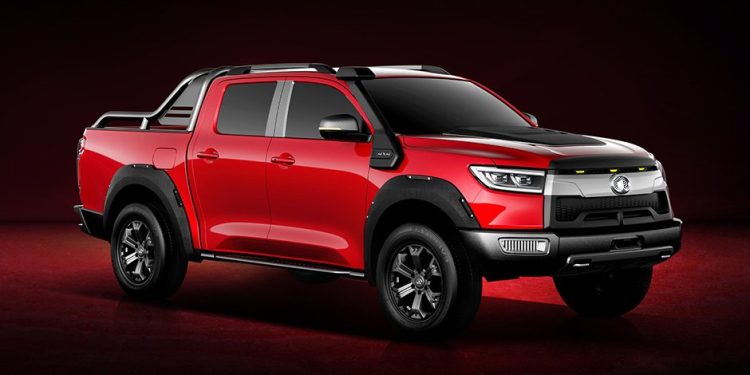Great Wall electric ute to offer 450km of range. Is that enough?
We still don’t know a huge amount about Great Wall Motors’ in-the-pipeline electric variant of the Cannon double-cab ute. But, thanks to a recent information leak, we can start to put some of the puzzle pieces together.
China’s Ministry of Innovation and Information Technology has published details concerning the electrified Cannon’s sister SUV; the Ora Cherry Cat (yes, that’s the name of a car in 2021). The details reveal it’s set to be powered by a 150kW electric motor, paired to either a 60.5kWh battery or a 79.6kWh battery.
The two batteries are said to be good for 350km of range and 450km of range, respectively, and it’s tipped that the latter is destined for Great Wall’s planned electric pick-up.
Great Wall showed off the first images of an electric ute concept in 2019 with a hiss and a roar, proudly exclaiming that the model was developed for Australian and New Zealand conditions. But little has been spoken of the model since, even with its internal combustion cousin landing in local showrooms last year.

If the electric ute wants to win over the segment’s core demographic, it needs to pack ample range. And, in today’s field of EVs, 450km is actually fairly respectable. That figure would place the GWM almost line-ball for range with the Tesla Model 3 Standard Range. Not a bad feat for a vehicle that will inevitably be heavier and less aerodynamically efficient.
A typical double-cab diesel four-wheel drive ute will feature an 80-litre fuel tank and be able to travel around 800km per day. This naturally blows a 450km electric range out of the water for practicality. But, it’s also a much more expensive cost to live with over time.
The average New Zealand driver commutes around 30km per day (just not during these current lockdown times, obviously), but those who have utes for work purposes often have to travel much longer distances daily.
Plug-in pick-ups have been a particularly passionate topic of interest in New Zealand this year, following the introduction of the Clean Car Discount, statements from prime minister Jacinda Ardern that electric utes from mainstream brands were just around the corner, confirmation from Toyota CEO Neeraj Lala that that wasn’t true, and spates of protests around the country rallying against the so-called ‘ute tax’.

Among the few plug-in utes known to be in development among the country’s best-selling brands is Ford’s plug-in hybrid Ranger [pictured above]. Recently photographed while out testing in Europe, the Ranger PHEV is expected to be revealed in full later this year. It’s likely that the next-gen Volkswagen Amarok, which will be based on the same platform as the new Ranger, will also get plug-in tech.
Plug-in utes are likely to win over the segment’s traditionalist buyers quicker than pure electric alternatives due to their ability to tackle distances similar to pure diesel utes. They’re also theoretically easier for manufacturers to produce, and in most instances are cheaper to buy.
Can pure electric beat plug-in hybrid in the ute space? Expect most mainstream brands to focus more on the latter. At least for now.





